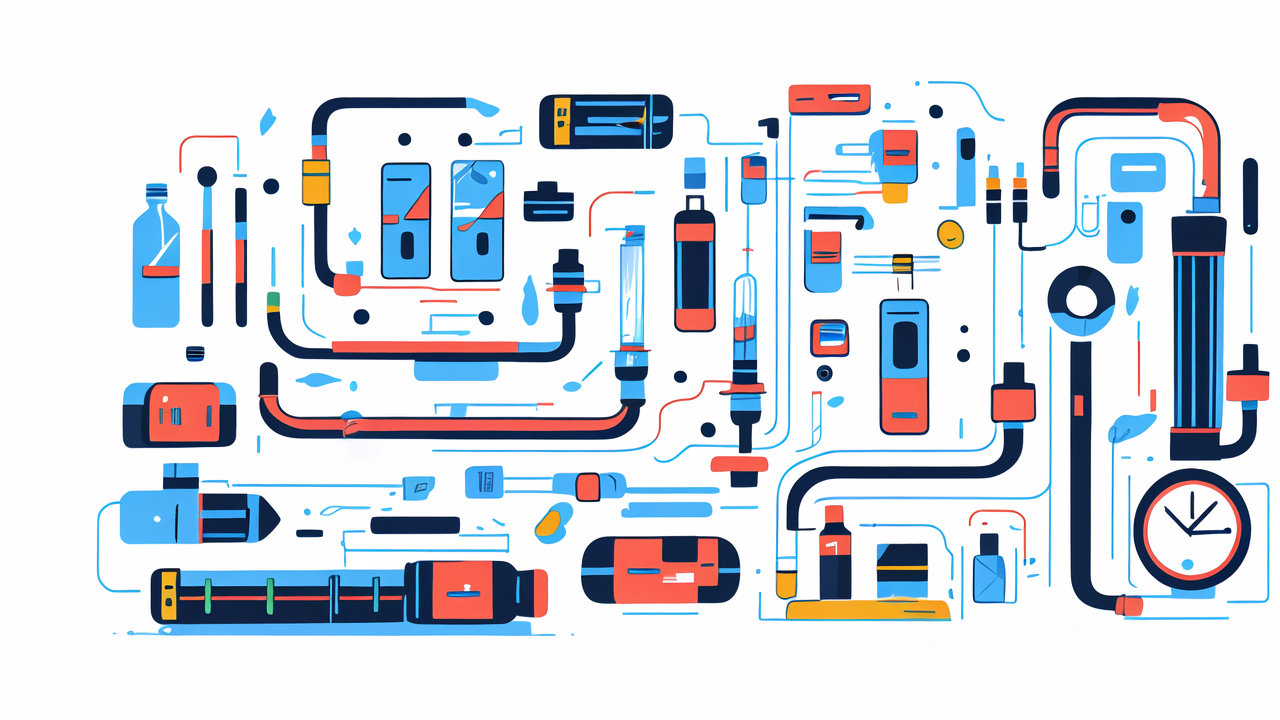Understanding the Basics of Water Pipe and Lighter Maintenance
The Importance of Regular Check-Ups
Regular check-ups are crucial for maintaining water pipes and lighters. They help prevent costly repairs and ensure safe operation. For water pipes, check for leaks, corrosion, and unusual noises. Look for signs of wear and tear, such as discoloration or cracks. For lighters, inspect the fuel level, flint, and ignition mechanism. Regular maintenance extends the life of your equipment and saves money in the long run. It also helps maintain water quality and prevents fire hazards. Make it a habit to inspect your water pipes and lighters at least once a month.

Identifying Common Issues with Water Pipes
Common water pipe issues include:
- Leaks: Look for wet spots, drips, or puddles
- Low water pressure: Check for clogs or valve problems
- Strange noises: Banging or whistling could indicate air in the pipes
- Discolored water: May signal rust or sediment buildup
- Foul odors: Could indicate bacterial growth or sewage issues
For lighters, watch out for:
- Difficulty igniting: May need flint replacement
- Weak flame: Could be a fuel or wick issue
- Fuel leakage: Indicates a damaged tank or seal
Early detection of these issues can prevent more serious problems down the line.
Basic Tools and Materials Needed for Maintenance
To maintain water pipes and lighters, you'll need:
- Pipe wrench
- Plumber's tape
- Leak detection solution
- Pipe cleaner
- Adjustable spanner
- Screwdriver set
- Lighter fluid
- Flints
- Cotton swabs
- Soft cloth
Keep these tools in a dedicated toolbox for easy access. For water pipes, also have spare washers and O-rings on hand. For lighters, stock up on replacement flints and wicks. Having the right tools makes maintenance tasks quicker and more effective. It's also wise to keep the contact information of a professional plumber and lighter specialist handy for complex issues.
Advanced Maintenance Techniques for Water Pipes and Lighters
Step-by-Step Guide to Cleaning and Servicing
For water pipes:

- Turn off the main water supply
- Open faucets to drain remaining water
- Inspect visible pipes for leaks or damage
- Clean pipe exteriors with a damp cloth
- Use a pipe brush to remove buildup inside accessible pipes
- Flush the system with clean water
- Check for leaks after turning the water back on
For lighters:
- Empty any remaining fuel
- Clean the exterior with a soft cloth
- Remove and clean the flint wheel
- Replace the flint if necessary
- Clean the wick and trim if frayed
- Refill with fresh fuel
- Test the lighter to ensure proper function
Regular cleaning prevents buildup and extends the life of your equipment.
Innovative Solutions for Lighter Maintenance
Modern technology offers new ways to maintain lighters:
- Ultrasonic cleaners: Remove stubborn dirt and grime
- LED inspection lights: Spot hard-to-see issues
- Specialized lighter maintenance kits: All-in-one solutions
- Eco-friendly cleaning solutions: Safe and effective alternatives
- Digital fuel gauges: Accurately measure fuel levels
These innovations make maintenance easier and more effective. They help extend the life of your lighters and ensure optimal performance. Consider investing in these tools for better maintenance results.
Water Pipe Repair and Replacement Strategies
When repairing water pipes:
- Identify the type of pipe (copper, PVC, etc.)
- Choose the appropriate repair method (soldering, push-fit connectors, etc.)
- Prepare the area by cleaning and drying
- Apply the repair solution (pipe sealant, epoxy, etc.)
- Allow proper drying time before testing
For replacements:
- Measure the section to be replaced
- Choose compatible materials
- Turn off water supply and drain the pipes
- Cut out the damaged section
- Install the new pipe using appropriate fittings
- Test for leaks before finishing
Always consider long-term solutions over quick fixes. If repairs are frequent, it may be time for a full replacement.
Safety and Compliance in Water Pipe and Lighter Maintenance
Adhering to Australian Standards and Regulations
In Australia, water pipe maintenance must comply with AS/NZS 3500. This standard covers:

- Plumbing and drainage systems
- Water services
- Sanitary plumbing and drainage
For lighters, follow the Consumer Goods (Disposable Cigarette Lighters) Safety Standard 2005. Key points:
- Child-resistant mechanisms
- Labeling requirements
- Performance standards
Stay updated on these regulations to ensure compliance. Regularly check for updates from Standards Australia and the ACCC. Non-compliance can lead to fines and safety risks.
Best Practices for Ensuring Safety
When maintaining water pipes:
- Wear protective gear (gloves, goggles)
- Use tools properly to avoid injury
- Be cautious of electrical hazards near water
- Ventilate areas when using chemicals
- Follow manufacturer instructions for products
For lighter maintenance:
- Work in a well-ventilated area
- Keep away from open flames
- Store fuel safely and separately
- Dispose of old parts properly
- Never modify safety features
Always prioritize safety over convenience. If unsure, consult a professional. Keep a first aid kit nearby for emergencies.
The Role of Professional Services in Maintenance
While DIY maintenance is important, professional services play a crucial role:
- Regular professional inspections can catch hidden issues
- Experts have specialized tools for thorough maintenance
- They can provide advice on improving system efficiency
- Professional services ensure compliance with regulations
- They can handle complex repairs and replacements
Consider scheduling annual professional check-ups for water pipes. For lighters, seek professional help for intricate repairs or vintage models. Balancing DIY maintenance with professional services ensures optimal performance and safety. Remember, some tasks are best left to the experts.










